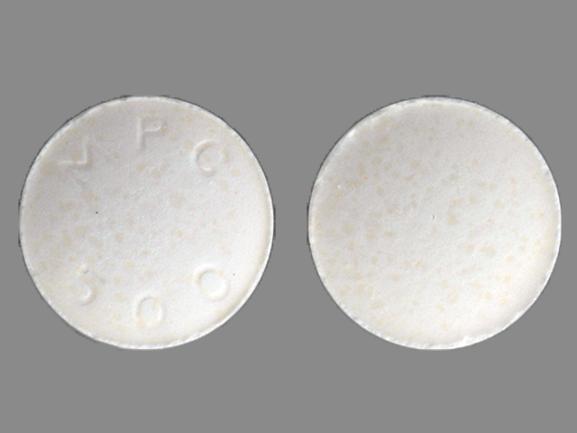Acetohydroxamic Acid Dosage
Medically reviewed by Drugs.com. Last updated on Sep 1, 2025.
Applies to the following strengths: 250 mg
Usual Adult Dose for:
Usual Pediatric Dose for:
Additional dosage information:
Usual Adult Dose for Urinary Tract Infection
Initial dose: 12 mg/kg/day orally every 6 to 8 hours
Maintenance dose: 250 mg orally 3 to 4 times a day in a total daily dose of 10 to 15 mg/kg/day
Maximum dose: 1.5 g daily (regardless of body weight)
Comments:
- Long-term treatment with this drug may be warranted to maintain urease inhibition if urea-splitting infection is present.
- Experience with this drug does not go beyond 7 years.
Use: As adjunctive therapy in patients with chronic urea-splitting urinary infection. This drug is intended to decrease urinary ammonia and alkalinity, but it should not be used in lieu of curative surgical treatment (for patients with stones) or antimicrobial treatment.
Usual Pediatric Dose for Urinary Tract Infection
10 mg/kg/day orally in 2 to 3 divided doses for up to 1 year
Comments:
- Children with chronic, recalcitrant, urea-splitting urinary infection may benefit from treatment with this drug; however, studies involving dosage and dose intervals in children have not been established.
- Close monitoring of the patient and hematologic status is recommended.
- Titration of the dose to higher or lower levels may be required to obtain an optimum therapeutic effect and/or to reduce the risk of side effects.
Use: As adjunctive therapy in patients with chronic urea-splitting urinary infection. This drug is intended to decrease urinary ammonia and alkalinity, but it should not be used in lieu of curative surgical treatment (for patients with stones) or antimicrobial treatment.
Renal Dose Adjustments
CrCl greater than 1.8 mg/dL: Administer no more than 1000 mg/day and dose at 12-hours intervals; further reduction may be necessary at the discretion of the healthcare provider
CrCl greater than 2.5 mg/dL: Not recommended.
Liver Dose Adjustments
Data not available
Precautions
CONTRAINDICATIONS:
- Hypersensitivity to the active component or any of the ingredients
- In patients whose physical state and disease are amenable to definitive surgery and appropriate antimicrobial agents
- In patients whose urine is infected by non-urease producing organisms
- In patients whose urinary infections can be controlled by culture-specific oral antimicrobial agents
- In patients whose renal function is poor (i.e., serum creatinine more than 2.5 mg/dl and/or creatinine clearance less than 20 mL/min)
- In female patients who do not evidence a satisfactory method of contraception
- Pregnancy
Consult WARNINGS section for additional precautions.
Dialysis
This drug is probably dialyzable; however, no dose adjustment guidelines have been reported.
Other Comments
Administration advice:
- This drug should be taken on an empty stomach.
- A patient package insert should be distributed to each patient.
Storage requirements:
- Store in a dry place at room temperature, 15C to 30C (59F to 86F).
- Container should be closed tightly.
Patient advice:
- Read the patient leaflet before taking this drug and with each refill.
More about acetohydroxamic acid
- Check interactions
- Compare alternatives
- Reviews (2)
- Side effects
- During pregnancy
- Drug class: miscellaneous genitourinary tract agents
- En español
Patient resources
Other brands
Professional resources
Other brands
Related treatment guides
See also:
Further information
Always consult your healthcare provider to ensure the information displayed on this page applies to your personal circumstances.


